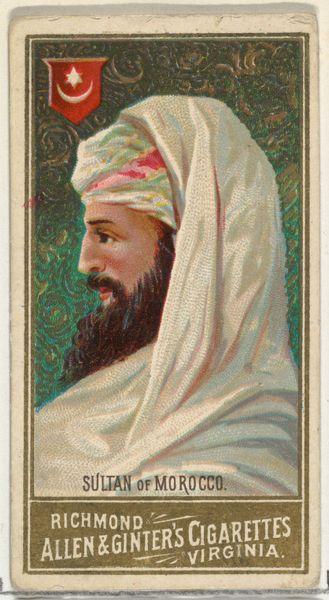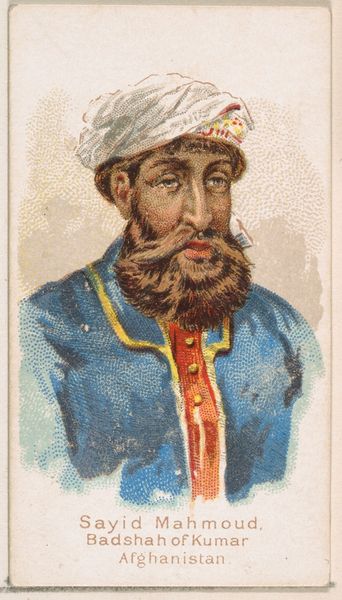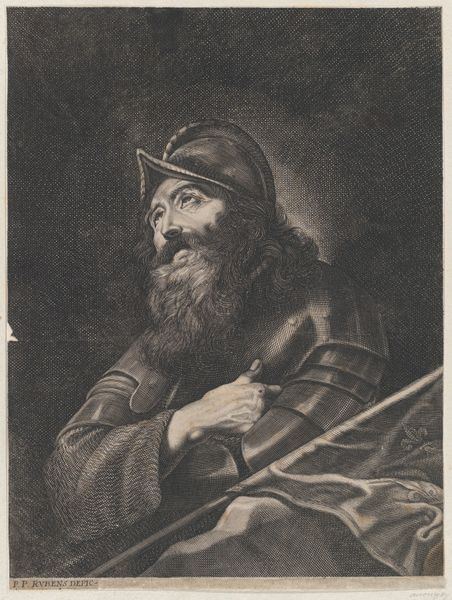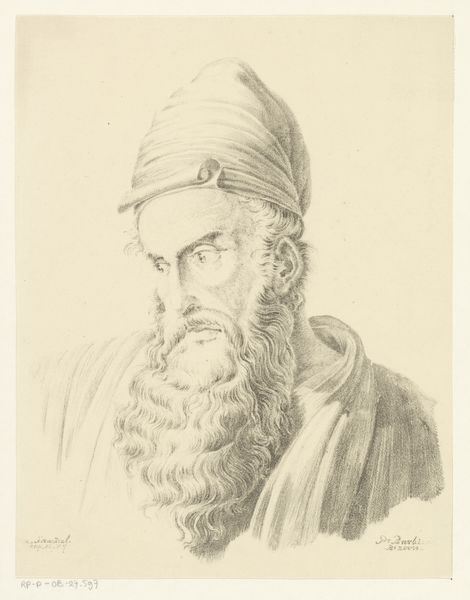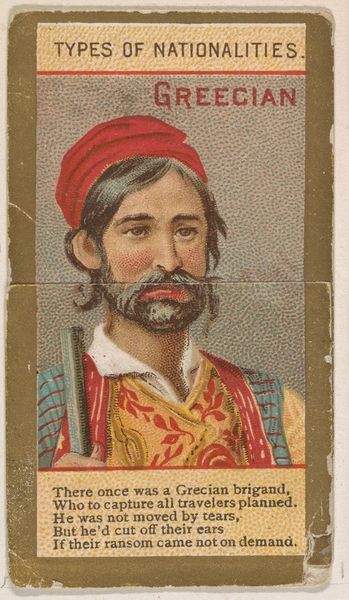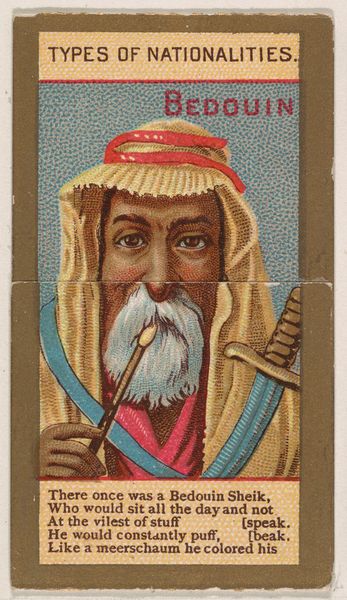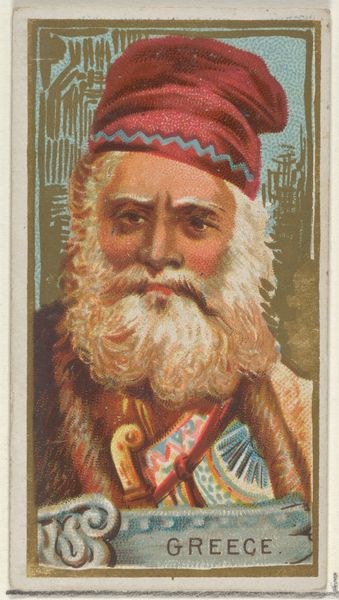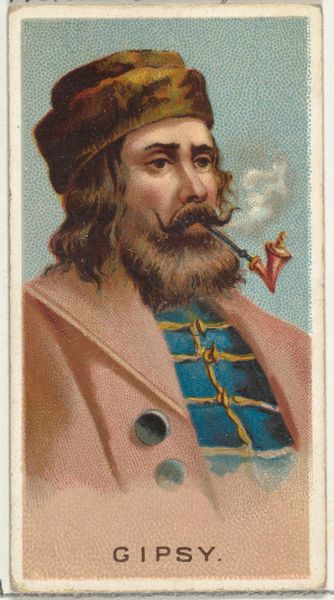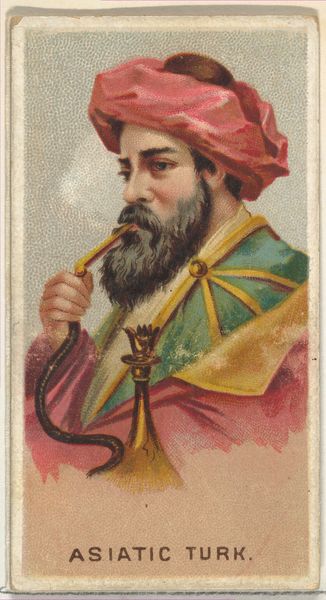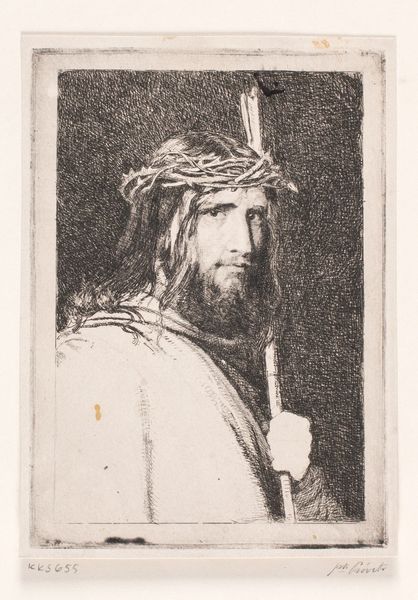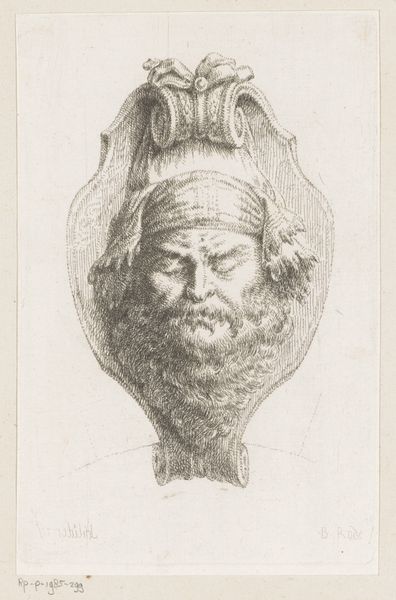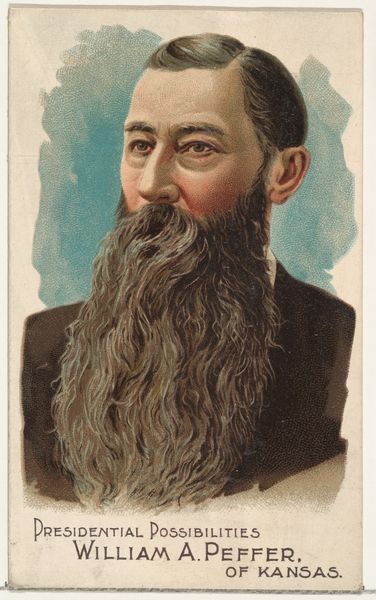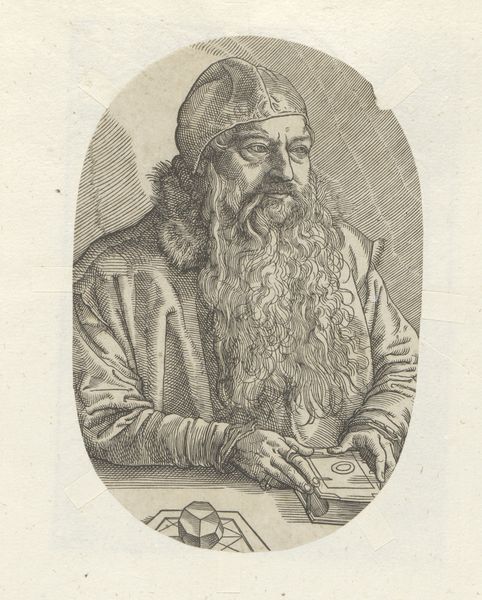
Circassia, from the Types of All Nations series (N24) for Allen & Ginter Cigarettes 1889
0:00
0:00
drawing, print
#
portrait
#
drawing
# print
#
men
#
portrait drawing
#
watercolour illustration
#
portrait art
#
watercolor
Dimensions: Sheet: 2 3/4 x 1 1/2 in. (7 x 3.8 cm)
Copyright: Public Domain
Curator: Let’s examine "Circassia" from the "Types of All Nations" series, created in 1889 for Allen & Ginter Cigarettes. It's a vibrant portrait, combining drawing and print techniques. What strikes you initially? Editor: It has an air of both authority and vulnerability. The subject's gaze is steady, but there's also a melancholy that seeps through the rather theatrical costume and setting. Curator: Note the composition; the artist's focus is squarely on the man’s face and headgear. The palette consists of ochre tones offset by pale hues with a touch of sky-blue as background washes, but the geometric details create strong, balanced rhythms across the figure's features. Editor: Beyond aesthetics, the title and series immediately lead me to consider representation, cultural appropriation, and colonial perspectives in popular culture. Who was this man? What was his real story and what did "Circassia" represent to the European consumer? The commercial purpose suggests an exoticism designed to market a lifestyle as much as the cigarettes. Curator: That's a critical lens through which to view the work. Allen and Ginter chose to highlight very specific characteristics: his ethnicity. In visual terms, however, it creates an opportunity to study contrasts: the curves of the face against the strong vertical of the pointy headwear. Editor: Yes, but these design choices reflect and reinforce prevailing power dynamics. The gaze flattens complexity and emphasizes otherness for a white consumer base, obscuring the violent history of Russian expansion into Circassia and the ensuing displacement of its people. The "All Nations" framing feels far from innocent when we acknowledge its origins. Curator: Interesting. This artwork, seemingly simple, in effect offers an interesting study in contrasts of its visual features and historical narratives. Editor: Absolutely. It highlights the way that aesthetics often serve underlying ideological structures, demanding that we question whose perspectives and values are truly being represented.
Comments
No comments
Be the first to comment and join the conversation on the ultimate creative platform.

